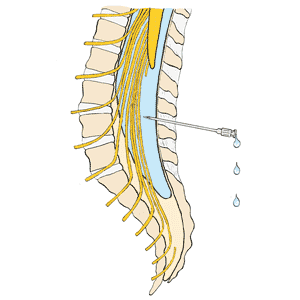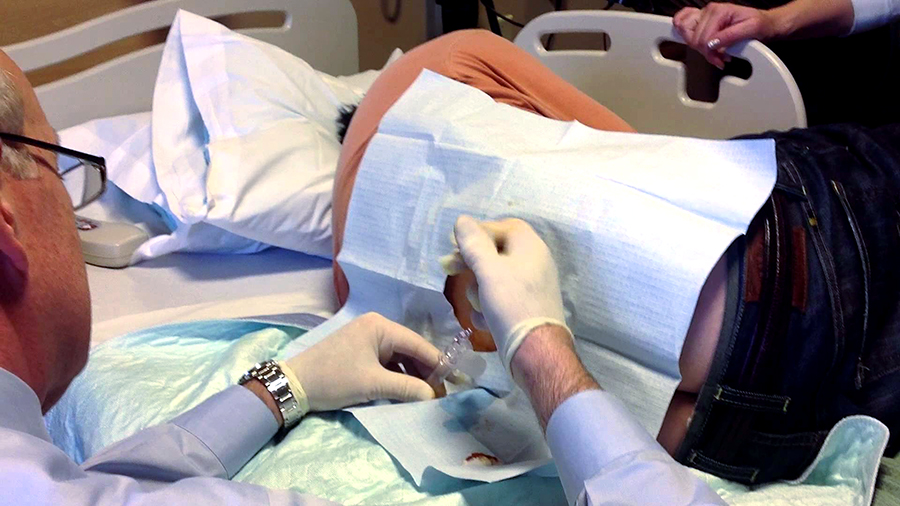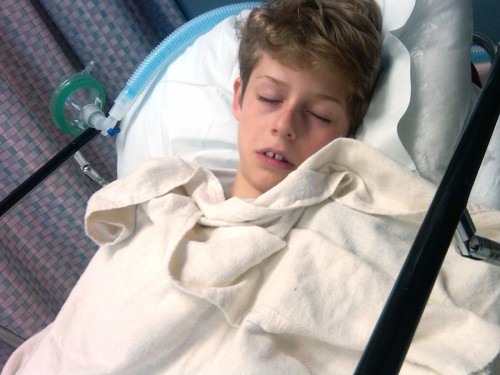Spinal Taps in Children
Let me let you listen in on a typical conversation between a pediatrician and parents of an infant, child or adolescent who is quite ill.
“Mr. and Mrs. Brown, Adam looks very ill, but I can’t be sure about what’s causing it until we run some tests.”
“It could be just a virus sore throat with a headache that’s making his neck stiff and giving him a fever; or, it could be something more serious such as meningitis. Are you familiar with that term and how we make the diagnosis?”
“No.”
“Well, let me explain some things. If you have any questions, stop me. OK? Meningitis is an infection of the membrane which forms a cushioning sack surrounding the brain and spinal cord.
“The brain and the long, slender spinal cord attached to it are such important structures that they are encased in a thin balloon-like sack filled with fluid.
“The fluid in the sack provides a cushion inside the hollow skull and backbone.
“Because of its blood supply and other reasons, this sack can become infected with either a virus or a bacteria.
“Whichever the cause, they both are quite serious and require hospital treatment. Virus infections need different treatment than bacterial and both must be treated rapidly in order to prevent very serious consequences.
 “I will make the diagnosis by taking a sample of the fluid from inside of the sack and analyzing it.”
“I will make the diagnosis by taking a sample of the fluid from inside of the sack and analyzing it.”
“Well, how do you get the fluid? Do you drill a hole in the skull?”
“No, fortunately that’s not necessary. The sack which surrounds the brain also surrounds the spinal cord down inside the hollow backbone.
“This sack continues down the backbone and then fortunately even goes a little ways past the end of the spinal cord, forming a little pouch of fluid.
“If we insert a needle through the skin, between the vertebrae and into this pouch, we can draw off some of the fluid for analysis.”
“Will it hurt him?”
“We’ll, we numb the area with an anesthetic like a dentist would do; so, there’s a small gauge needle at first. But you know, often the most uncomfortable thing for a child is being held down tightly so that he can’t move. Adam has always been good for me so, if I go slow, he might even go to sleep. It has happened once or twice for me.
“It’s very important that he remain absolutely restrained during the procedure so we don’t cause damage to the back or anything else. This sometimes causes younger children to cry. Especially if they can see the parents in the room and wonder why you are not helping them. That’s why I prefer it if you don’t come in with us. Mrs. Black is the nurse tonight and believe me she’ll be there for Adam.”
“What will you do with the spinal fluid?”
“We send it to the lab for several different tests. First, they look at it under the microscope to count the number of pus cells in the fluid and see if the are ‘lymph’s’ or ‘poly’s’.
“If there are more than one or two pus cell, then we know there is an infection. If they are poly’s, then the infections is probably bacterial; which we treat with antibiotics for about two weeks in the hospital.
 “If they are lymph’s, then the infection is probably a virus.
“If they are lymph’s, then the infection is probably a virus.
“We also have the lab measure the fluid glucose level which goes down in bacterial infections; and protein level which tends to go up in virus infections.
“Of course they also culture the fluid to see if any bacteria might grow.
“All of this usually takes a couple of hours for the lab to do.”
“Are there complications?”
“Well, with most invasive procedures there might always be a risk of complications. There is a small risk of introducing an infection with the needle if he doesn’t have one already. That’s why we scrub and do it under sterile conditions.
“Rarely, the fluid sack can be torn and produce a leak of spinal fluid, which then takes longer to heal and may produce a headache. That’s why we go very carefully and we strongly restrain the child during the procedure.
“Rarely, if the needle hits a nerve, it can cause pain down the leg and might injure it. And, just to cover all the bases, I have only ever heard of one case where the needle broke off and had to be removed surgically.
“All of these complications are so extremely rare, however; and the disease we are trying to prevent is so bad that the benefits far, far outweigh the risks.
“That’s why many medical school professors tell their student doctors that ‘if you even think it could be meningitis, then do a spinal tap.’
“And a professor told me once that ‘if you’re not getting 50 percent normal spinal taps, then you’re not thinking about the diagnosis often enough and one of these days you will miss a meningitis until it is too late.”
“It’s good we’re seeing Adam now, when it seems like it still would be in the early stages if this turns out to be meningitis. I hope that Adam’s stiff neck and fever is just from a flu-like virus that will resolve on its own. But if it is meningitis, I need to get him on antibiotics as quickly as possible. The studies show that the earlier a bacterial meningitis is treated the fewer complications that develop.”
This discussion is not intended to relate to any specific case. Any questions should be thoroughly discussed with your child’s own pediatrician if the necessity arises.
Advertisement by Google
(sorry, only few pages have ads)

